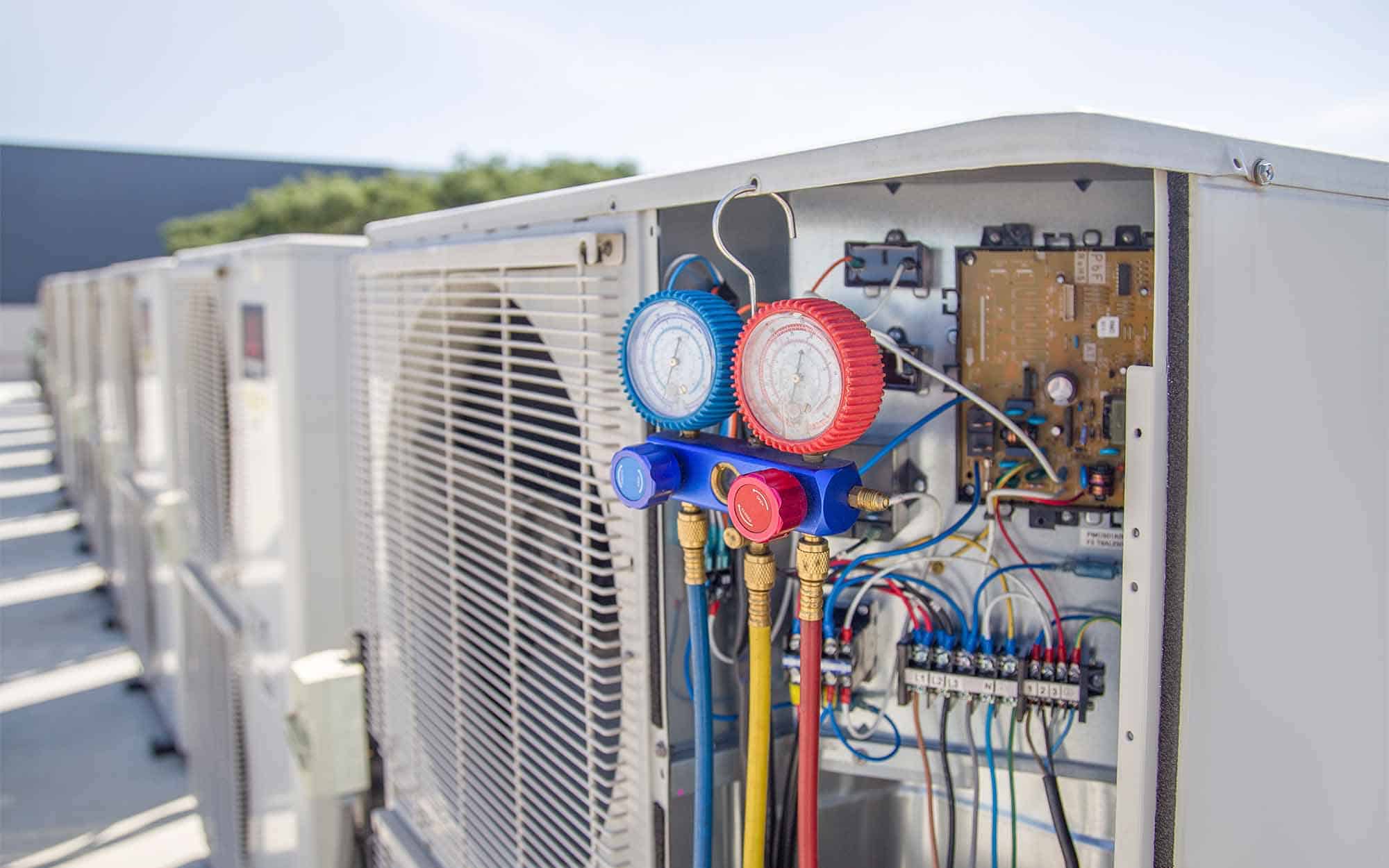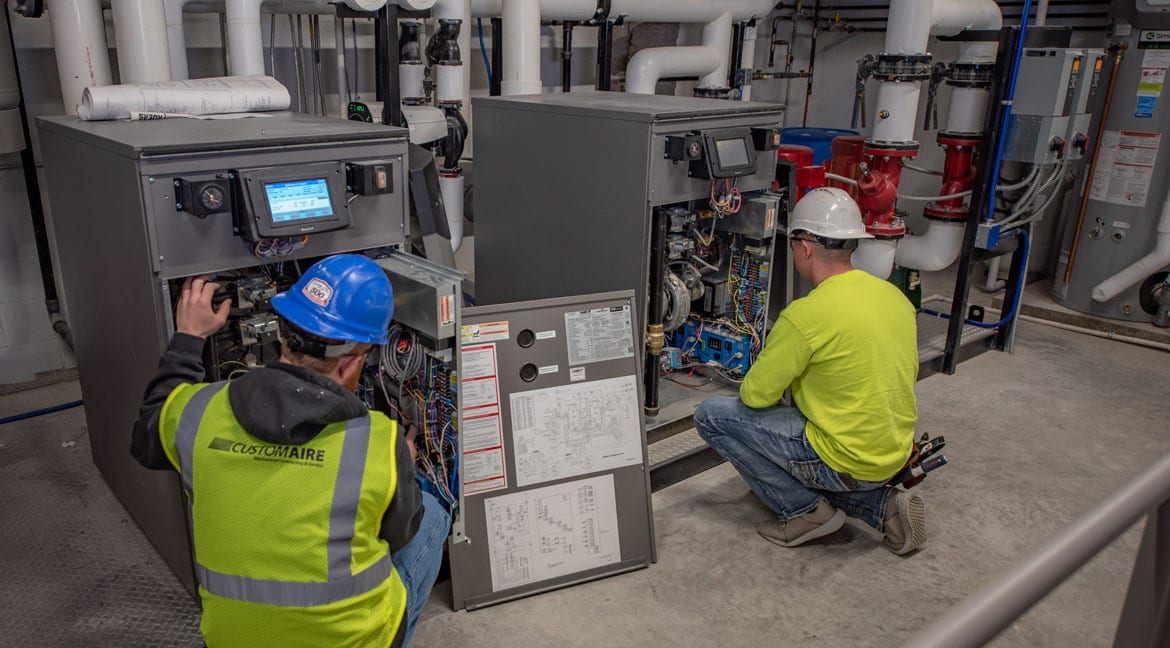Advice from Technicians on heat pump installation ooltewah tn
Advice from Technicians on heat pump installation ooltewah tn
Blog Article
Exactly How a Heat Pump and Furnace Collaborate to Enhance Your Home's Home heating Performance
Understanding exactly how a heatpump and heating system collaborate is vital for house owners seeking reliable home heating solutions. Each system has its strengths, offering a balanced technique to home convenience. The heatpump excels in moderate temperatures, while the furnace supplies fast warmth throughout extreme cold. This harmony not only decreases power expenses yet likewise boosts the lifespan of both appliances. What elements affect this cooperation, and just how can homeowners optimize their benefits?
Understanding Heat Pumps: Exactly How They Work
Although many individuals may be unfamiliar with their internal functions, warm pumps play a vital role in contemporary heating unit. These gadgets operate by transferring heat from one location to one more, utilizing the concepts of thermodynamics. In cooler months, a warmth pump removes heat from the outdoors air, ground, or water, and transfers it indoors to warm up the living area. On the other hand, throughout warmer months, it can reverse the procedure, acting as an air conditioner by getting rid of heat from inside to the outside.Heat pumps consist of an evaporator, compressor, condenser, and development valve. The cooling agent within the system takes in warm as it vaporizes at low temperature levels and pressures. The compressor then boosts the pressure and temperature level of the refrigerant, enabling it to release warmth as it condenses. This effective procedure can greatly lower power intake contrasted to conventional home heating methods, making heatpump a lasting selection for environment control in homes.
The Role of Heaters in Home Home Heating
Heating systems play a necessary role in home heating by providing a dependable source of heat throughout the chillier months. They operate by producing warm through combustion or electrical resistance, distributing it throughout the home using air ducts or radiant systems. The performance of a heating system is frequently measured by its Yearly Fuel Utilization Performance (AFUE) score, which suggests just how efficiently the system converts fuel into heat.Furnaces can utilize various power sources, consisting of all-natural gas, electricity, lp, or oil, allowing home owners to choose one of the most appropriate choice for their requirements. Unlike heat pumps, which may have a hard time in extreme cold, heaters maintain consistent efficiency, guaranteeing that interior temperature levels stay comfy despite exterior conditions. Furthermore, modern-day heating systems usually come furnished with innovative modern technology, such as smart thermostats and variable-speed blowers, improving their performance and responsiveness. This versatility makes heaters an important element in all-inclusive home heating approaches.

Benefits of Using Both Equipments Together
Combining the strengths of both heaters and warmth pumps can lead to a more reliable and reliable home heating service. Using both systems permits property owners to make the most of the warmth pump's energy efficiency throughout milder temperature levels while relying upon the heater for even more extreme cold problems. This double technique can greatly lower power expenses, as heatpump eat less electrical energy than standard heating techniques when temperature levels are moderate.Additionally, using both systems together can improve convenience degrees in the home. Warm pumps can supply consistent, even heating, while furnaces can rapidly raise ambient temperature levels when needed. The integration of both systems can expand the lifespan of equipment by decreasing wear and tear on each unit, as they share the workload. Inevitably, property owners can delight in a balanced, affordable home heating option that adjusts effortlessly to varying weather condition problems, ensuring a warm and welcoming home throughout the winter season.
Exactly How Warmth Pumps and Furnaces Enhance Each Other
When home owners integrate heat pumps and heating systems, they produce a complementary furnace that makes the most of effectiveness and comfort. Warmth pumps run by transferring heat from the outside air or ground, making them extremely effective in moderate environments. They excel during milder temperatures, providing affordable home heating. Alternatively, heaters generate warmth via combustion or electrical resistance, supplying strong, prompt warmth throughout extreme cold conditions.The combination of these 2 systems permits dynamic changes based upon temperature level variations. During warmer months or milder winter months days, the heat pump can take the lead, saving power and reducing expenses. As temperatures decline, the heating system can perfectly involve, making sure constant heat throughout the home. This synergy not just optimizes energy usage however likewise boosts the life-span of both systems, as each unit operates within its excellent performance range. With each other, they produce a well balanced atmosphere that adjusts to varying climate needs.
Optimizing Efficiency: Tips for Homeowners
Homeowners can improve their heating effectiveness with several practical strategies. Developing a regular upkeep timetable, integrating smart thermostat modern technology, and implementing efficient insulation and securing solutions are key steps. These measures not only boost convenience yet likewise reduce power prices.
Routine Upkeep Schedule
To ensure maximum heating effectiveness, establishing a regular upkeep routine is necessary for any type of home. Homeowners should prioritize routine inspections of both heat pumps and furnaces to identify peak performance. This consists of transforming air filters each to three months, as clogged up filters can significantly lower performance. Furthermore, organizing professional upkeep at the very least when a year go to this web-site allows professionals to determine and deal with potential issues before they rise. Homeowners need to also cleanse the warm pump's outside device to avoid debris build-up that can impede air flow. By sticking to a routine upkeep schedule, home owners not just improve their heating unit' performance however additionally extend their life expectancy, causing greater comfort and reduced energy costs throughout the cooler months.
Smart Thermostat Combination
Integrating a clever thermostat right into a home heating system can greatly enhance power effectiveness, especially as it permits for precise control over temperature setups. These tools can learn the property owner's schedule and preferences, instantly changing the temperature to optimize comfort while decreasing energy use. For circumstances, they can lower heating during times when the home is vacant, minimizing unnecessary consumption. Many clever thermostats likewise offer important site real-time power use information, enabling homeowners to make enlightened decisions regarding their heating habits. Furthermore, remote gain access to through smart device apps allows individuals to adjust setups from anywhere, guaranteeing the home is warm upon return. In general, wise thermostat combination not just enhances convenience but considerably adds to energy cost savings and effectiveness.
Insulation and Securing Solutions
Smart thermostats play a crucial function in energy performance, yet their performance can be greatly improved by proper insulation and securing solutions. Property owners must prioritize insulating attic rooms, wall surfaces, and floorings to decrease warm loss. Premium insulation products, such as spray foam or fiberglass, can substantially improve thermal resistance. Furthermore, sealing voids around doors, windows, and air ducts protects against cool air infiltration and warmth retreat. Weatherstripping and caulking are effective approaches for dealing with these leaks - heat pump service. Normal assessments for air leakages, along with the use of blower door examinations, can help determine issue locations. By purchasing insulation and securing, home owners can enhance the performance of their heating unit, inevitably causing lowered energy consumption and reduced energy expenses
Usual Misconceptions About Heat Pumps and Furnaces
What misunderstandings border warm pumps and heating systems? Several individuals incorrectly believe that warmth pumps are inefficient in chillier climates. Actually, modern-day heatpump are created to run successfully even in reduced temperature levels, giving reliable heating throughout winter season. Another usual myth is that furnaces are constantly extra reliable than heatpump. This depends on the specific energy resources and effectiveness rankings of the systems in concern. Some might likewise think that utilizing both systems at the same time is unneeded, but as a matter of fact, this mix can maximize heating efficiency, specifically throughout severe weather. Additionally, individuals usually presume that heatpump need constant maintenance, when in truth, they have similar upkeep requires to conventional heater. By debunking these myths, house owners can make more enlightened decisions regarding their home heating choices, eventually leading to improved convenience and power effectiveness in their homes.
Upkeep Factors To Consider for Combined Systems

Frequently Asked Concerns
Can Warm Pumps Work Effectively in Very Cold Climates?
Heatpump can battle in incredibly cold climates because of reduced effectiveness and warmth removal constraints. However, developments in modern technology have resulted in designs developed for much better performance in such conditions, improving their stability in rough settings.
How Much Time Do Warmth Pumps and Furnaces Commonly Last?
Heatpump normally last 15 to 20 years, while furnaces have a lifespan of 15 to 30 years. Routine upkeep can extend their durability, ensuring reliable procedure and decreasing the requirement for early replacements.

What Is the Typical Cost of Putting Up Both Equipments?
The ordinary expense of mounting both a heatpump and a heating system typically ranges between $5,000 to $10,000 - furnace replacement. Elements influencing this expense include system size, setup complexity, and regional labor rates
Are There Tax Rewards for Using Energy-Efficient Home Heating Systems?
Many house owners make inquiries about tax obligation rewards for energy-efficient heater. Different federal and state programs commonly supply rebates or credit reports, urging the fostering of lasting innovations to decrease power intake and promote environmental duty.
How Do I Pick the Right Size Heatpump and Heating System?
Picking the best dimension warm pump and furnace involves computing the home's square video footage, taking into consideration insulation top quality, and reviewing neighborhood environment. Consulting a specialist can assure perfect system efficiency and power effectiveness based upon details requirements. heat pump service. Understanding how a heat pump and furnace work with each other is necessary for homeowners seeking reliable heating services. In cooler months, a heat pump essences warmth from the outdoors air, ground, or water, and transfers it indoors to heat the living space. When property owners incorporate warm pumps and heaters, they create a corresponding heating system that makes the most of performance and comfort. Heat pumps run by transferring heat from the outdoors air or ground, making them highly effective in modest climates. Warmth pumps can have a hard time in extremely chilly climates due to minimized effectiveness and heat extraction restrictions
Report this page